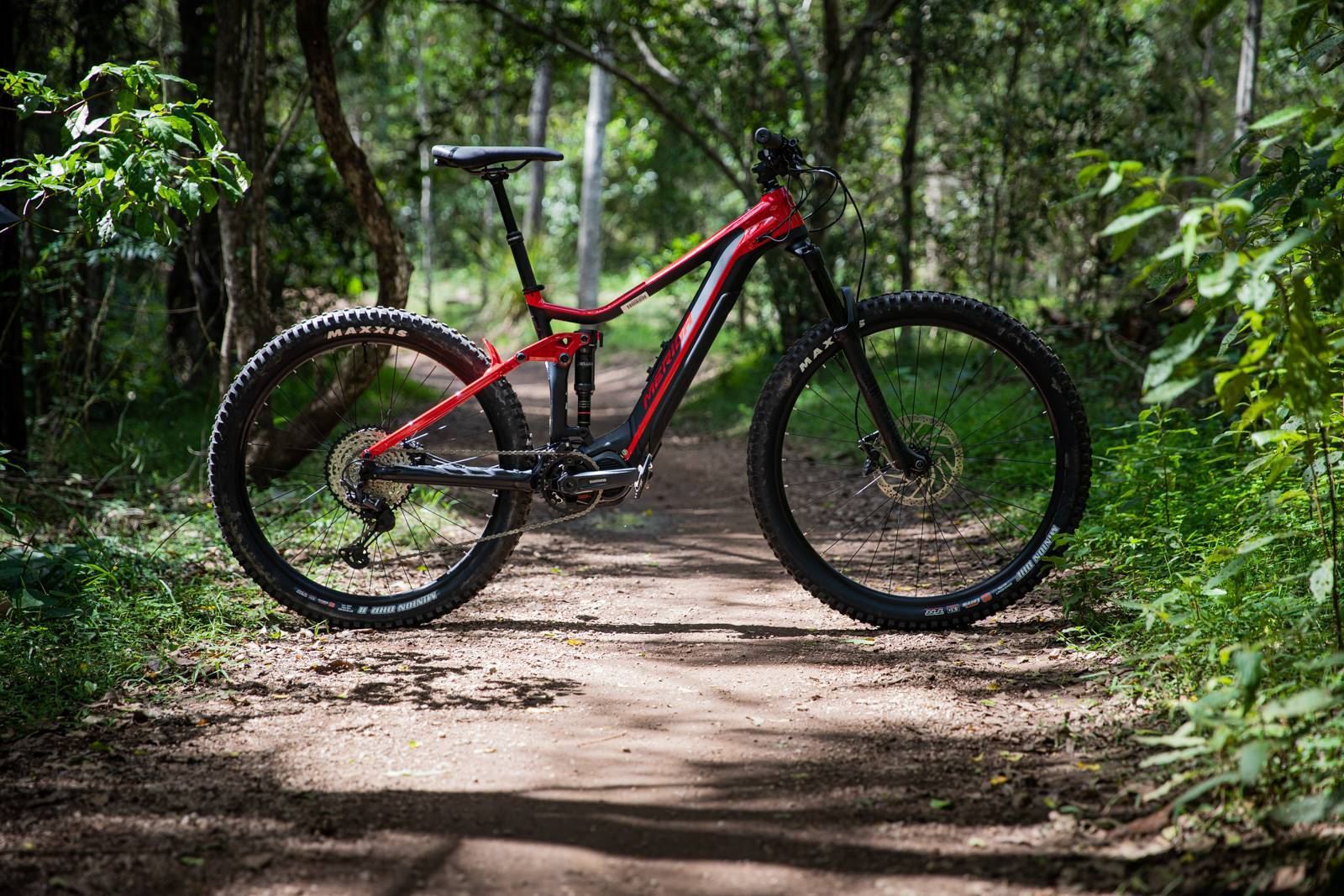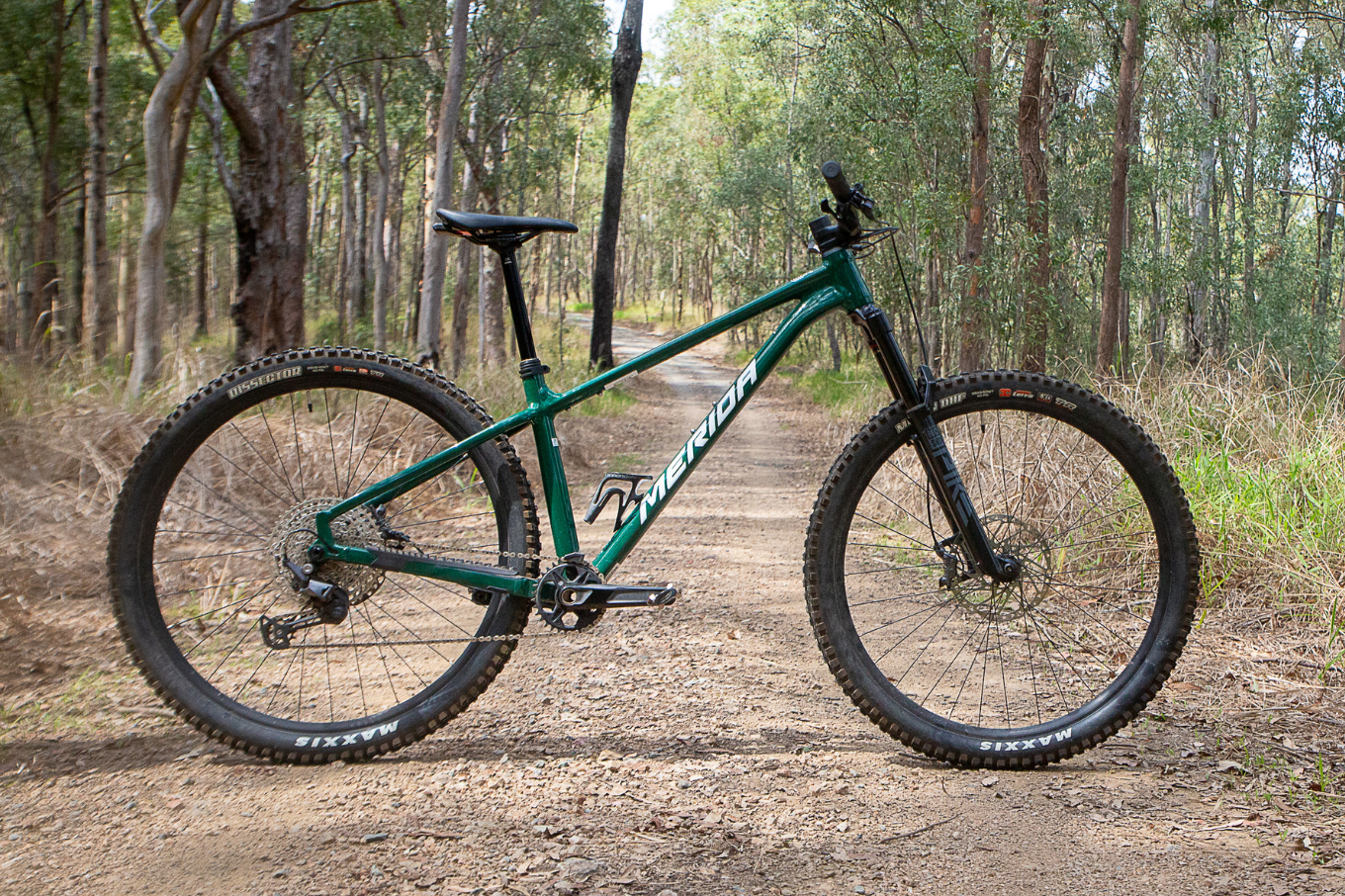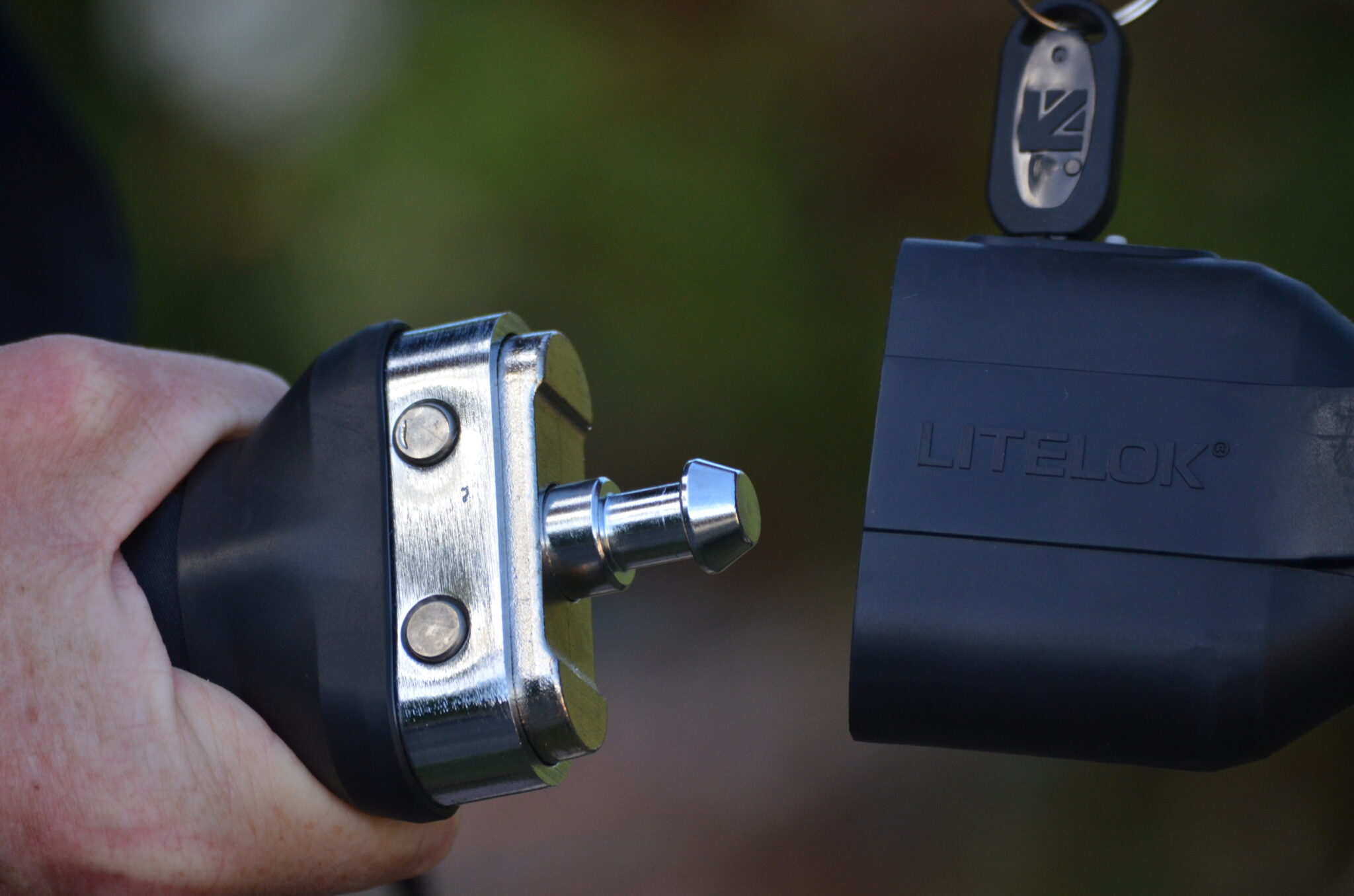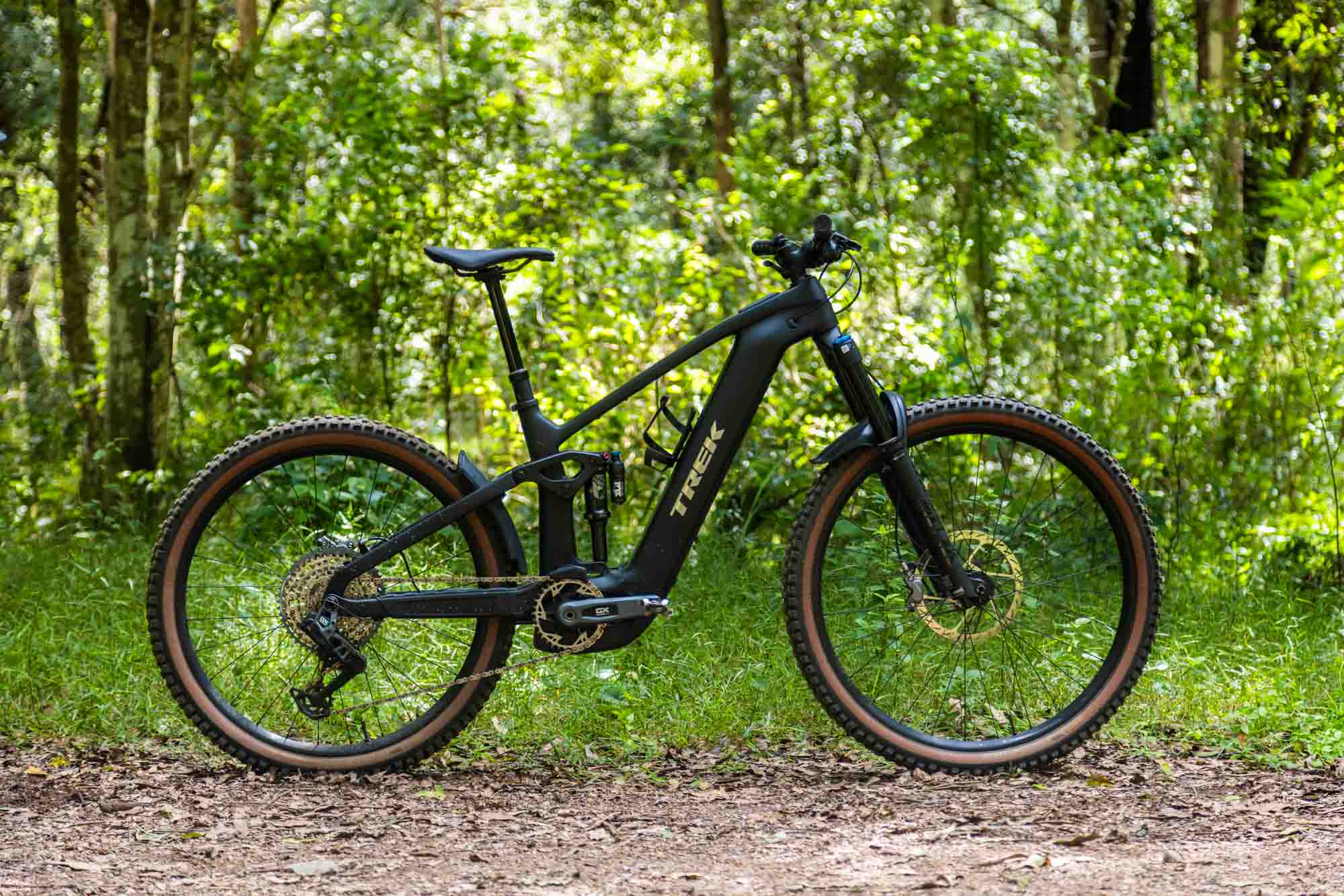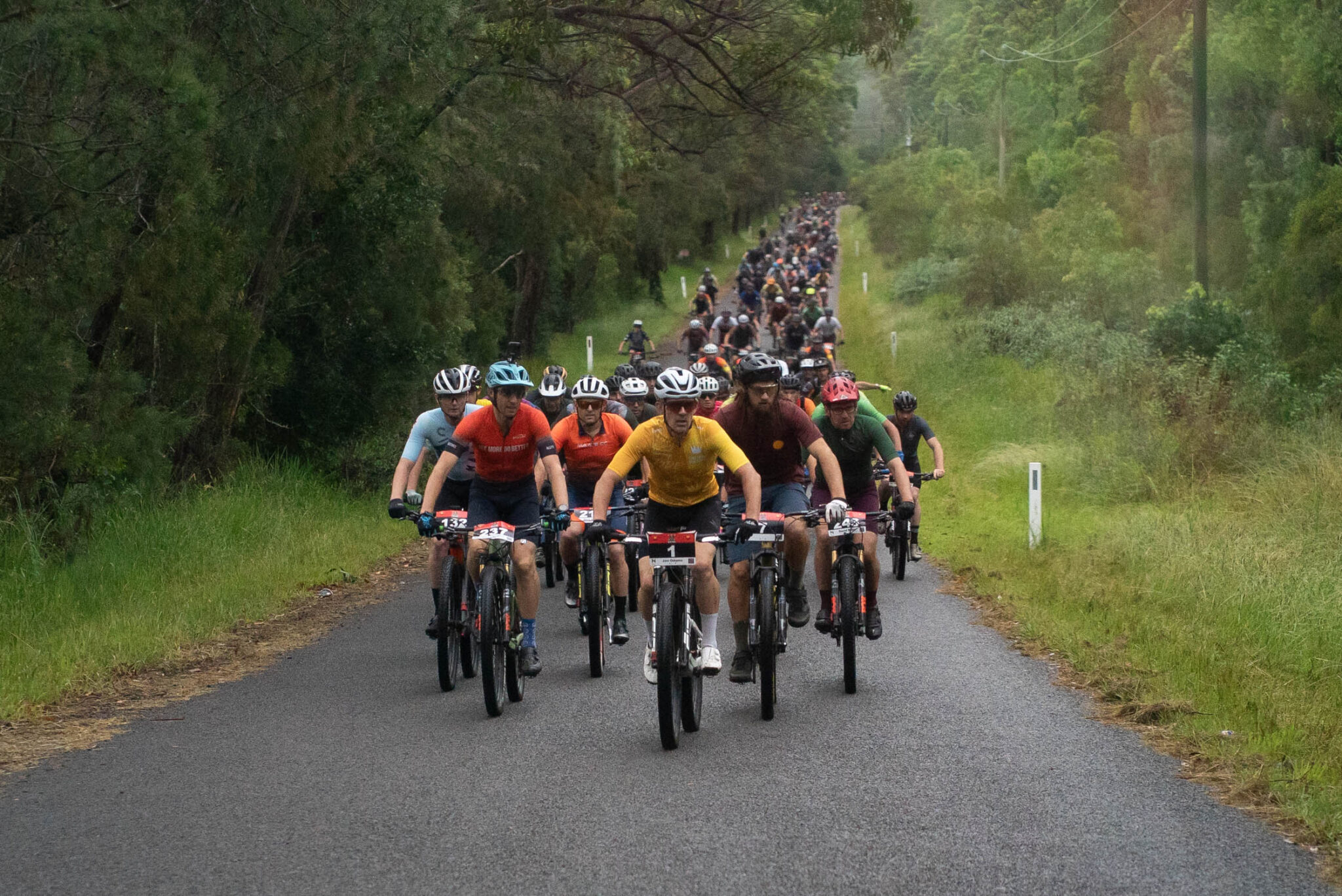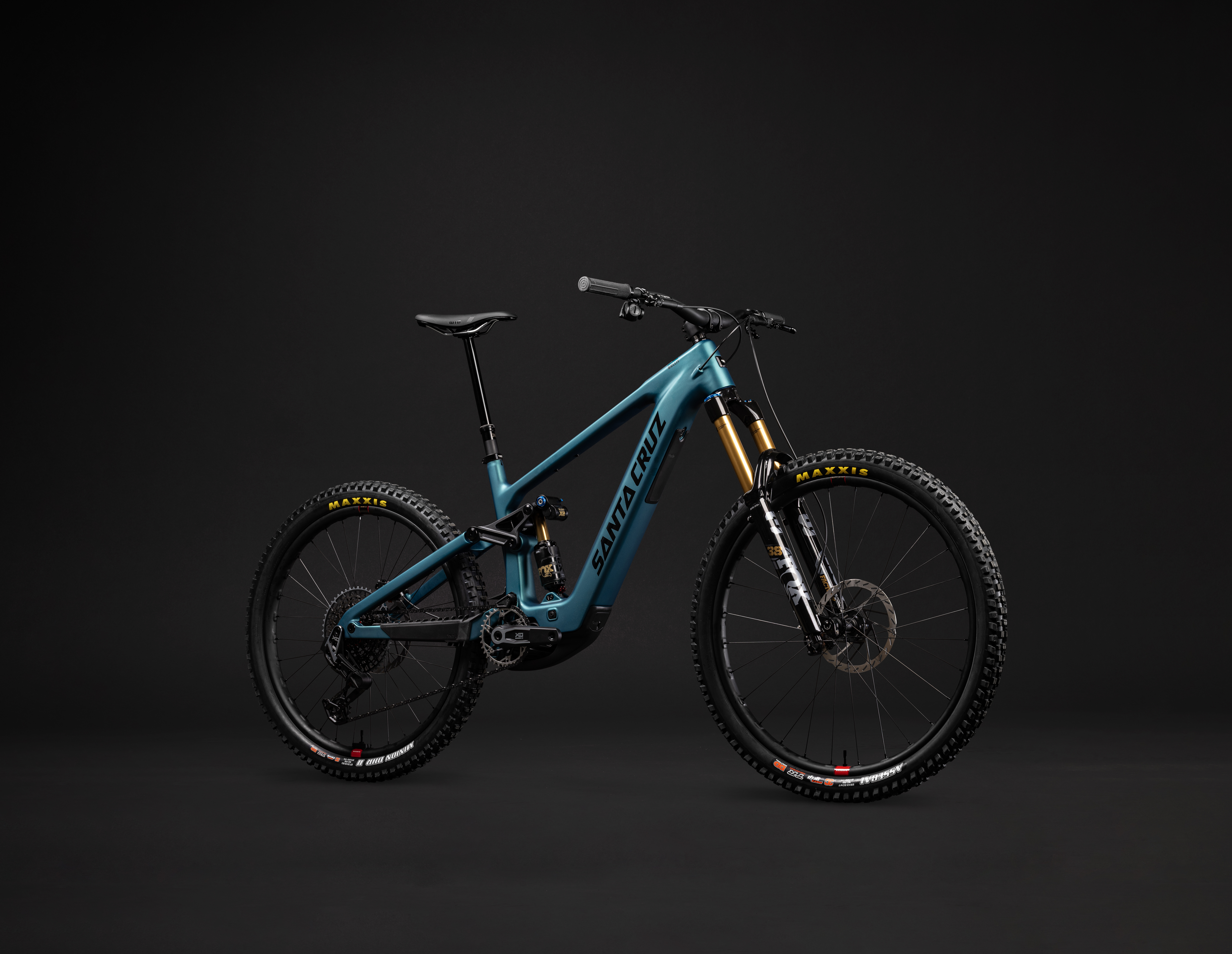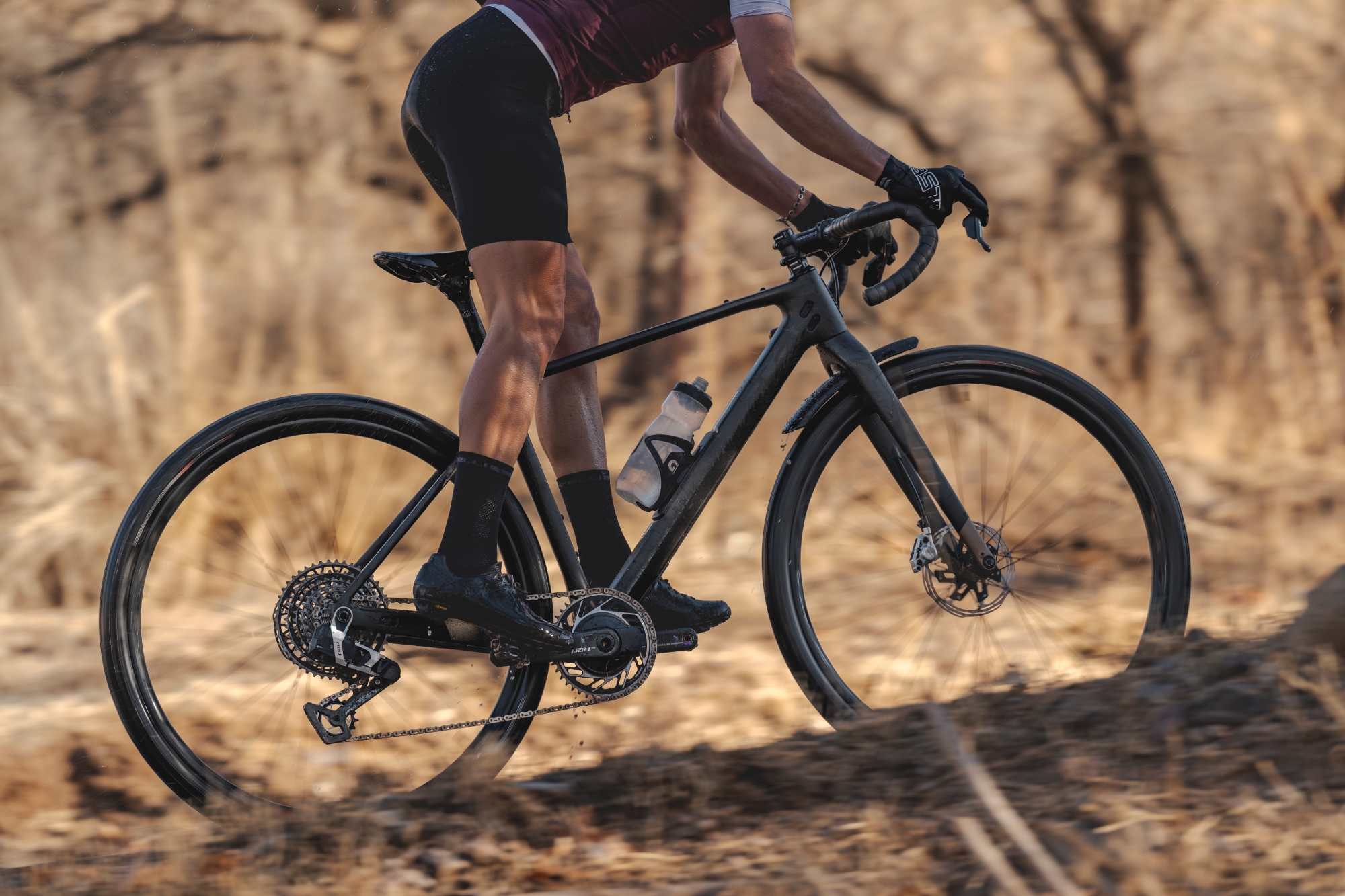TESTED: Merida eONE-FORTY Limited Edition
Testing the eONE-FORTY trail eMTB from Merida bikes!
Words: Mike Blewitt Photographer: Colin Levitch
Merida Bikes need little introduction, especially for their pedal-assist mountain bikes. Merida took the eMTB world by storm when they released the eOne-Sixty in 2017, and it was the eOne-Sixty 900E that truly won accolades, with a parts spec that was the envy of many, and better value than many bikes on the market that lacked the Shimano STEPS pedal-assist unit!
In 2019 Merida updated the eOne-Sixty platform so the frame geometry and suspension matched current market expectations – and they made the mainframe carbon. With a eOne-Forty model also produced, Merida acknowledged that a lot of riders who bought an eOne-Sixty did so for the eMTB assistance, not so much for have 150mm of suspension travel. The eOne-Forty platform uses the same mainframe as the eOne-Sixty, but with a shorter travel fork and different shock, Merida can deliver geometry that is better suited to all-day riding and tighter trails. A steeper seat angle puts you in a better position to climb, and the lower front end helps to keep the front end stuck to the ground in fast corners going up or down.
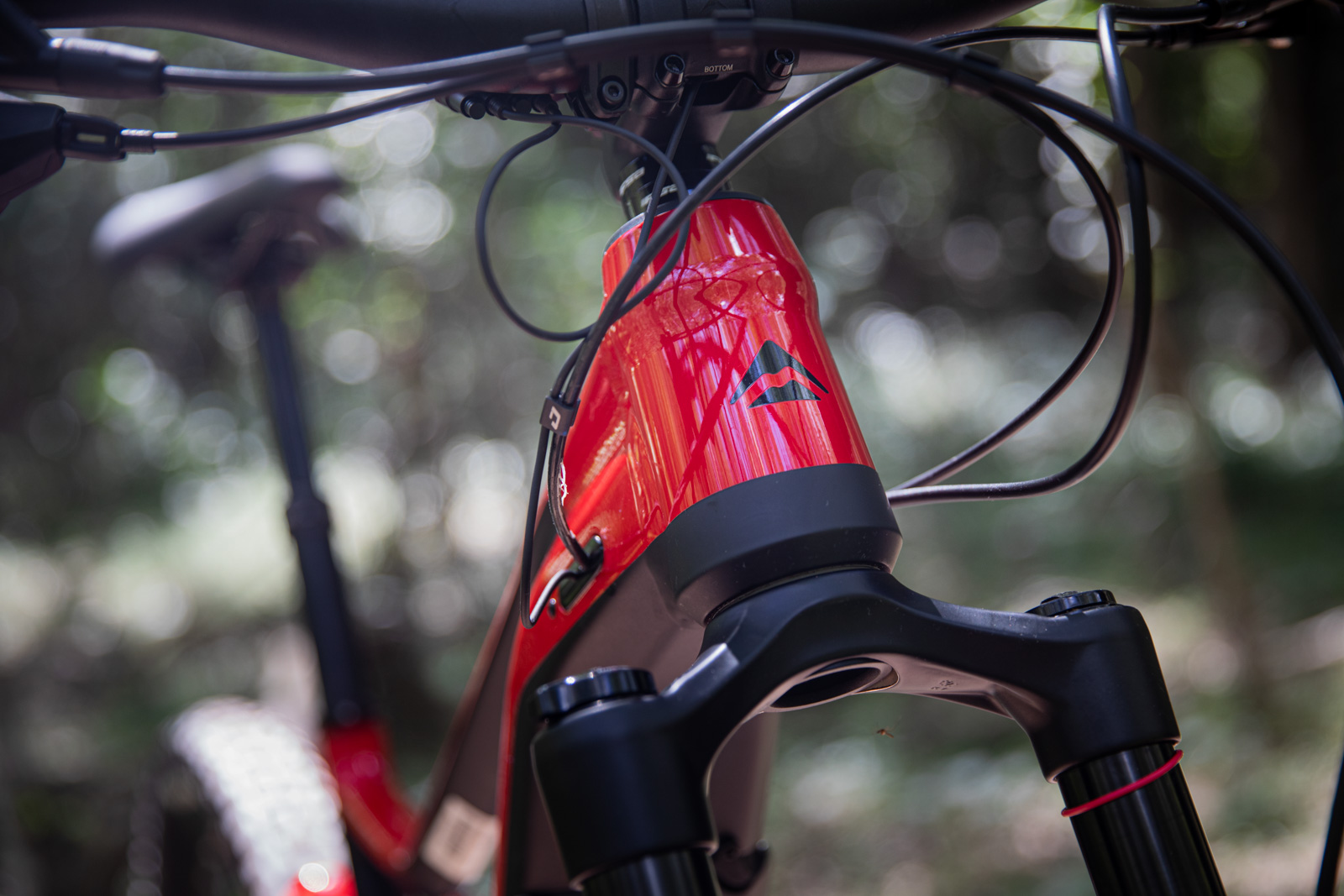
Earlier this year Brad Babel tested the Merida eOne-Forty 8000, the carbon framed, Shimano Deore XT M8100 equipped model. At that time it was the only eOne-Forty model available, but during the testing period the aluminium framed eOne-Forty LTD and eOne-Sixty LTD were released, bringing the same platform to a cheaper price point – in this case $6499 for the eOne-Forty LTD on test.
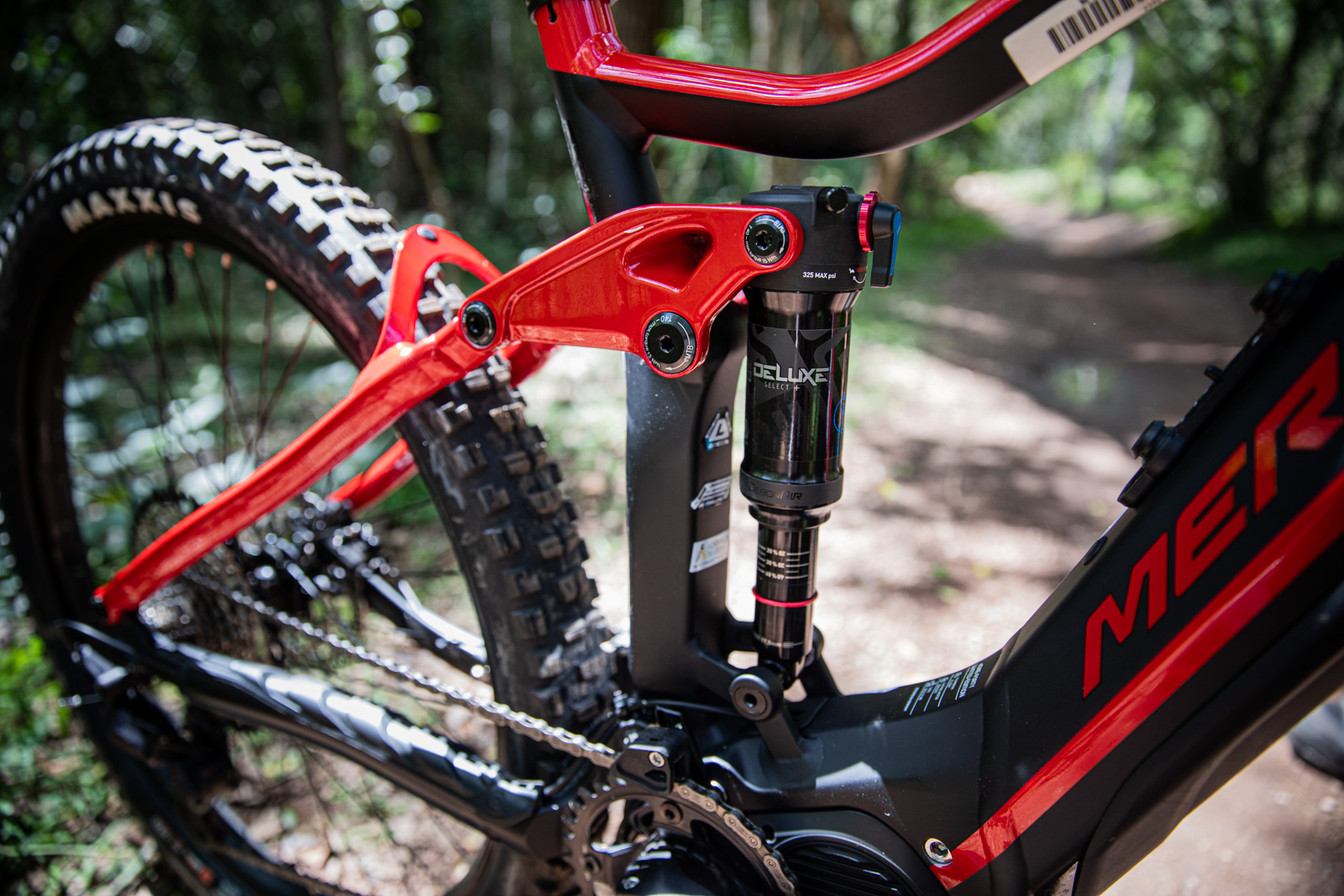
Initial Impressions
The Merida eOne-Forty LTD reflects Merida’s position as a powerhouse of bike manufacturing. The design of an eMTB is a lot more complex than just welding some tubes together for a basic hardtail. The hydroformed frame is shaped to take the integrated battery, the on and off switch that sits into the top tube, internal routing and more. And it looks really good. The top tube is dropped for more clearance, but you can still fit a water bottle inside the frame. Merida have included the multitool that sits in a section of the saddle, and the removeable Allen key from the rear axle. These are both nice touches.
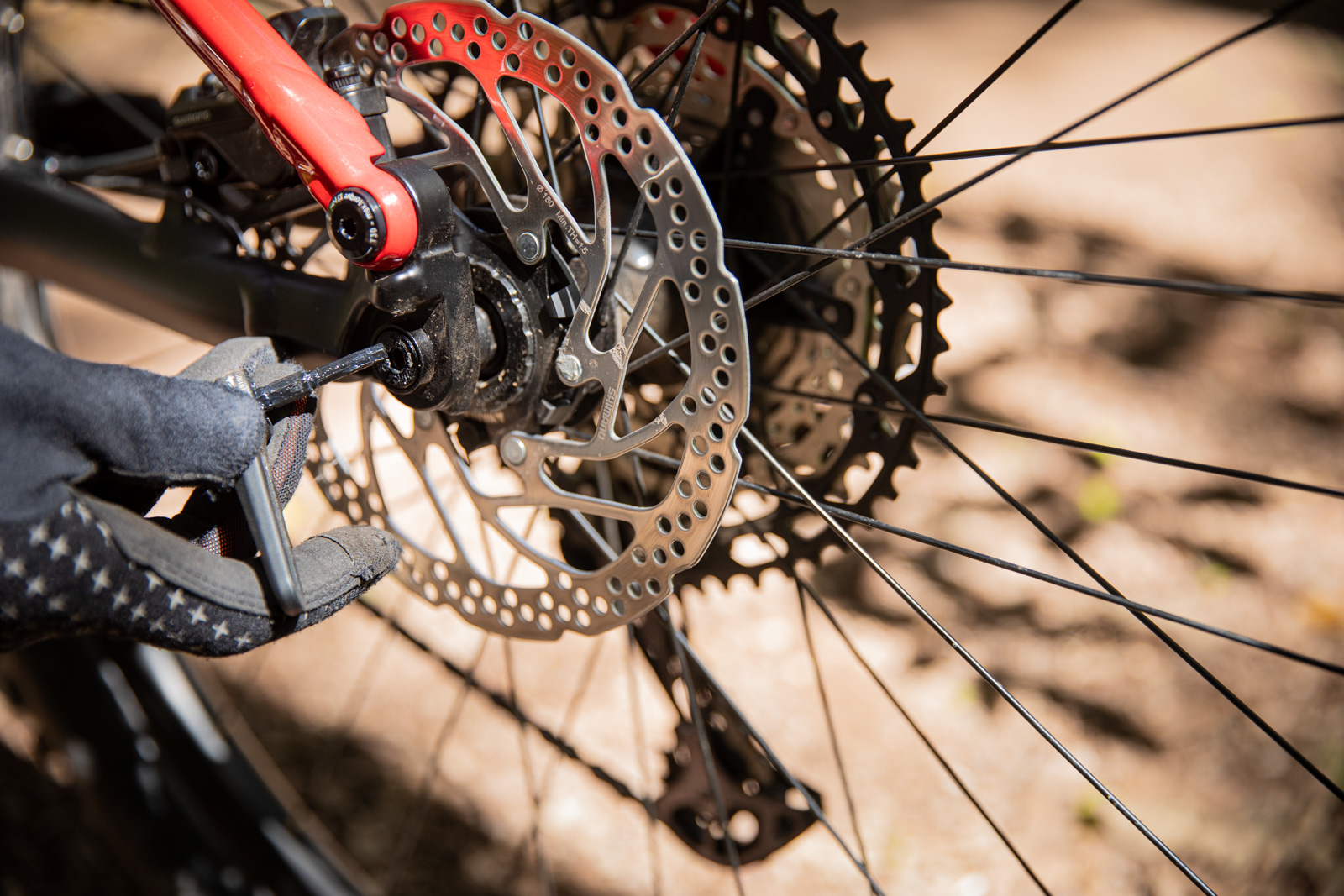
The battery cover is said to not just protect the battery, but also help reduce trail noise, along with the chain stay protector which has raised sections to keep your chain quiet in the roughest terrain. While I find adjusting the cable locking internal routing ports is a bit finicky, they really work and keep the outer and hoses in place. The Shimano STEPS E8000 system is the top system from Shimano, with three modes and customisation options via their app. The 504Wh battery can be seen as a little small by current standards with some bikes moving to 625Wh. That does bring extra weight, and it really depends what your riding goals are. You could always invest in a spare battery for truly epic days.
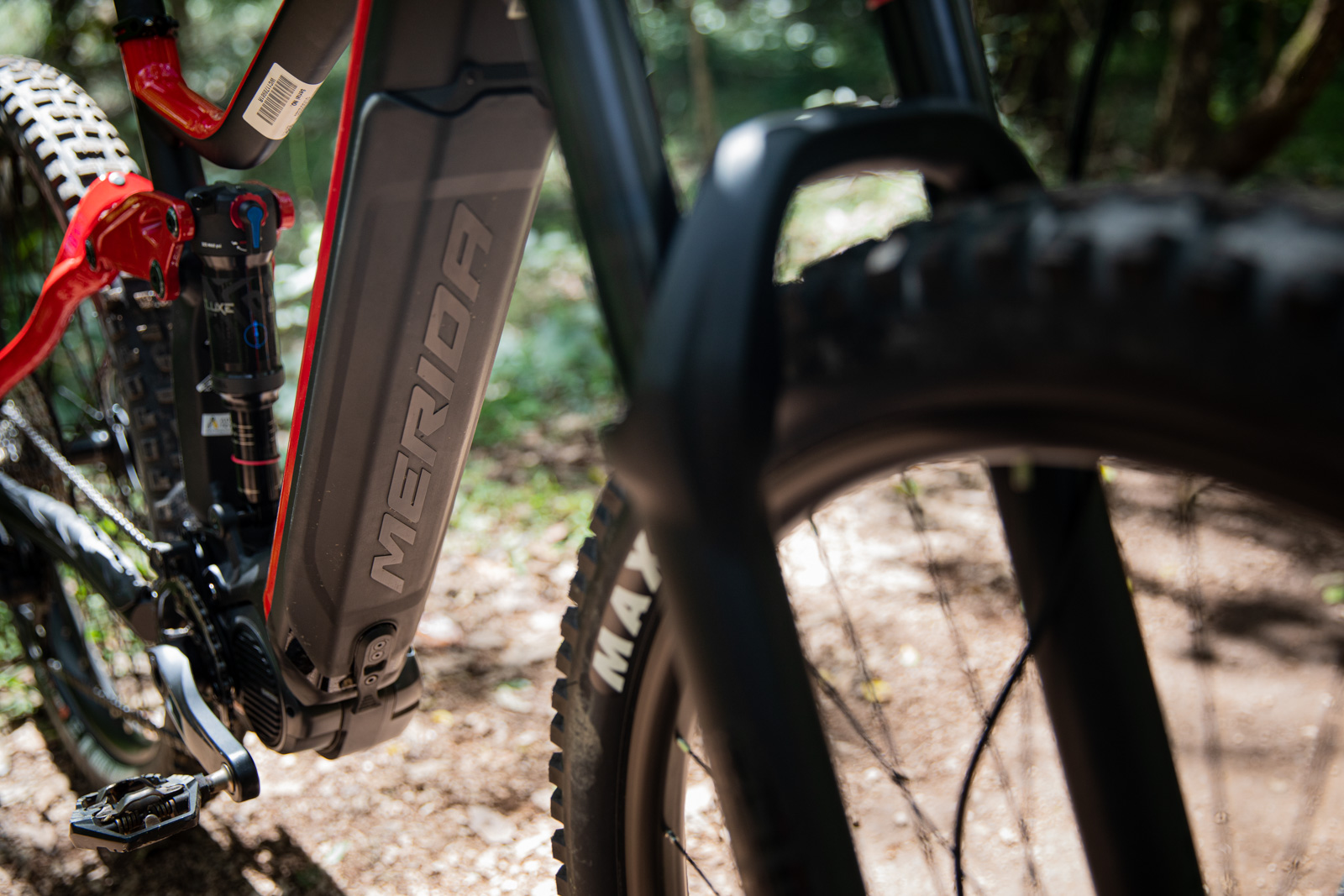
A nice addition is the internal routing in the bar for the E7000 mode shifter on the left, keeping the whole cockpit quite neat on the Merida branded bars, stem and lock on grips. And that’s what a lot of the spec is, there is a lot of Merida branded components. From the cockpit, to the dropper post and even the rims. It might take off a bit of shop floor appeal, but the performance is there. The rims have a 29mm internal width, and although they don’t come setup for tubeless, they set up easily with Peaty’s 30mm tape and valves, and the Maxxis tubeless ready tyres inflated with zero hassle.
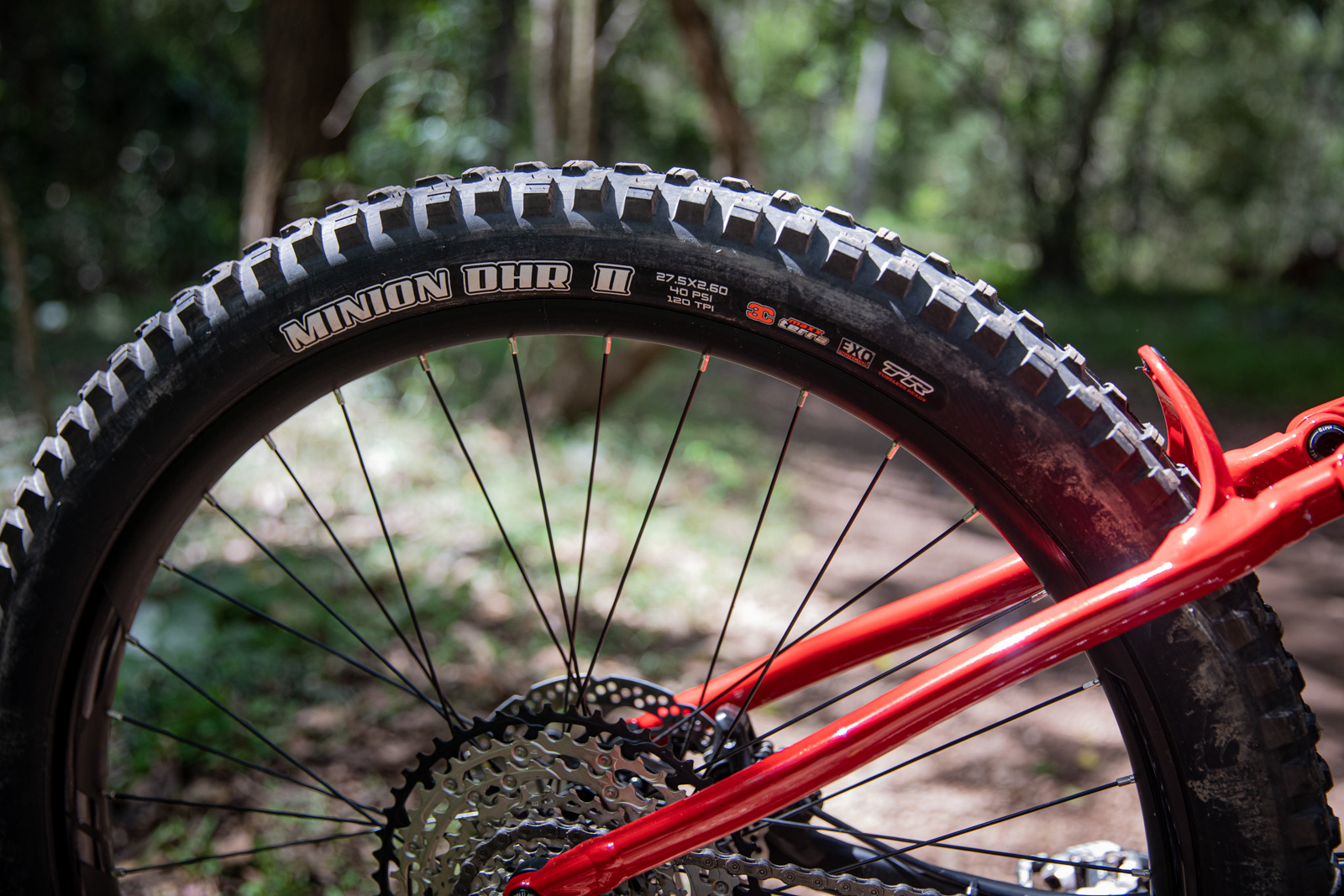
I was a little surprised to see a 4-pot Shimano brake on the front and a 2-pot on the back. I get it, as the front brake is the one where power is required on a heavy bike. The brakes do use resin pad only rotors, and this is probably a smart area to upgrade if you live in an area where the trails are often wet and gritty. The drivetrain is Shimano’s 12-speed, with a predominantly M7100 SLX set up with a Deore XT M8100 rear mech. So far, Shimano’s 12-speed gear has been faultless, and it’s a smart spec on an eMTB thanks to how well it shifts under load.
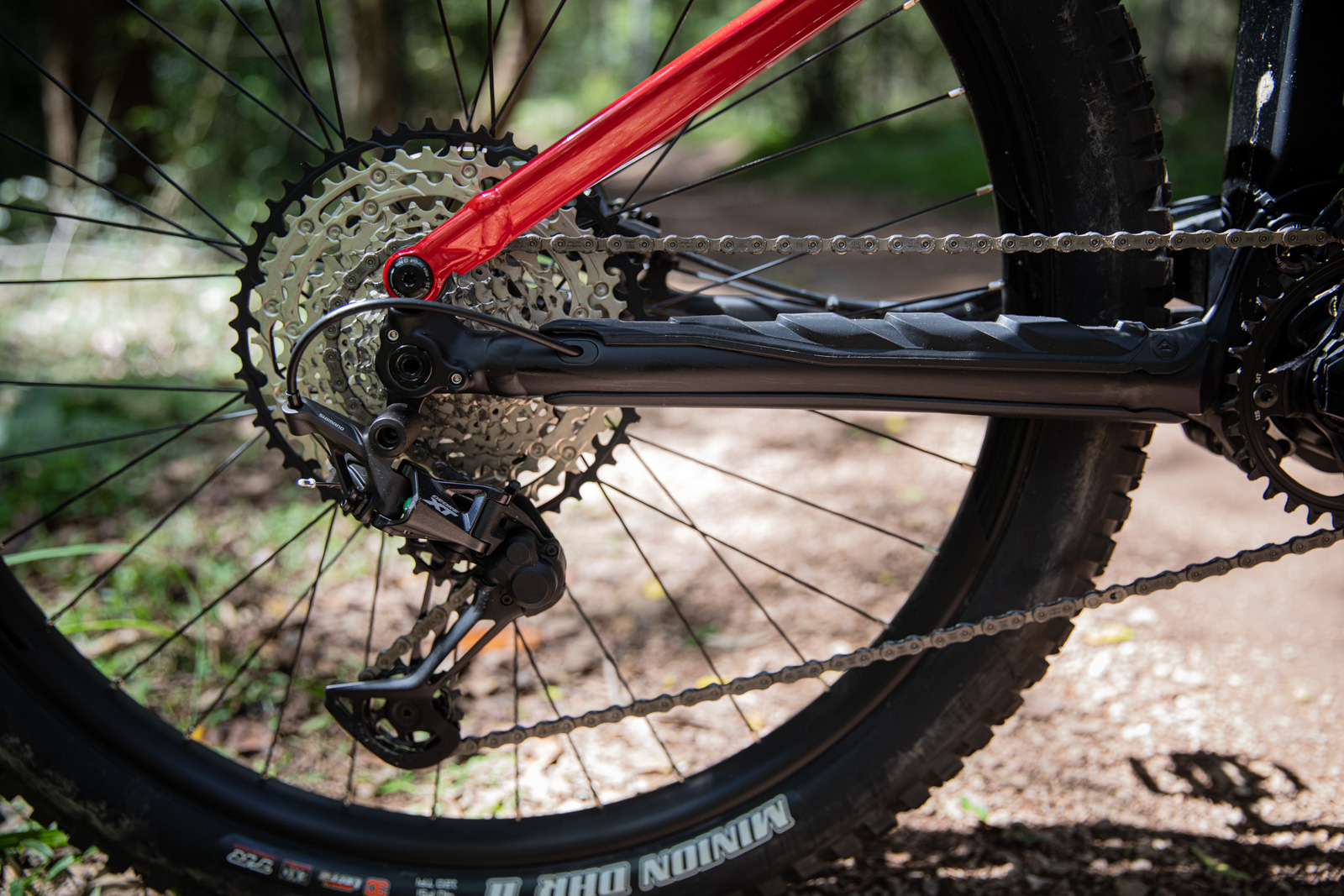
The suspension is probably one of the biggest differences between the eOne-Forty 8000 and the LTD. Sure, the frame is alloy and not carbon, but the Gold 35 RL fork and Deluxe Select+ shock are much simpler. Whether that’s a problem or not was something I would have to find out. Setup was easy enough, although I tend to run a little higher than your usual sag settings when setting up an eMTB. You’ve got more weight in the system which is otherwise static on a sitting sag test. I do the same for the tyres, running a few psi more than I would otherwise, for the security and the right handling at speed.
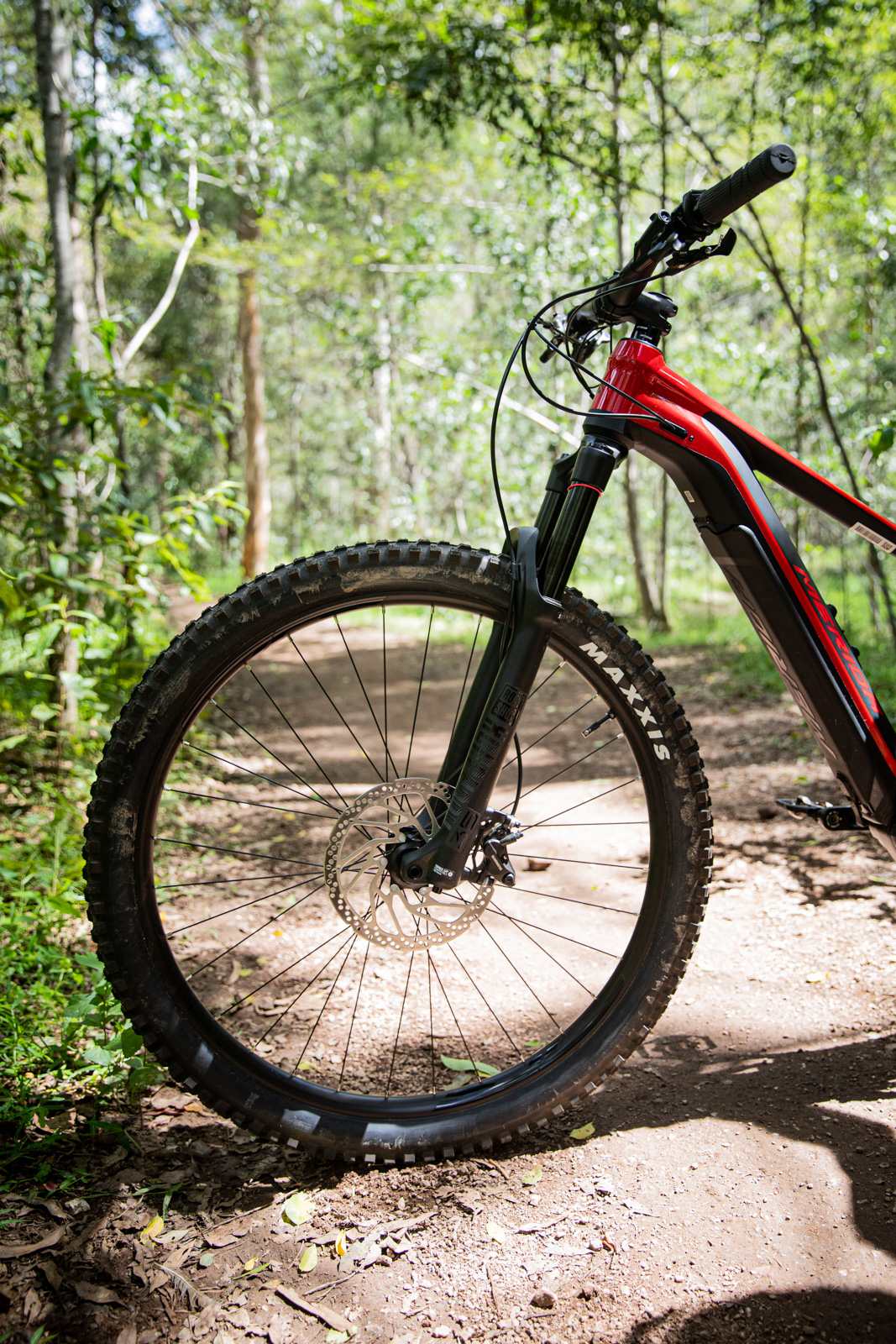
At a hair under 24kg with pedals, we have tested heavier eMTBs, and lighter as well. There is truth to the fact that you have a motor, so it doesn’t matter. But you do notice the extra weight anytime you want to mvoe your bike around – it is just unavoidable.
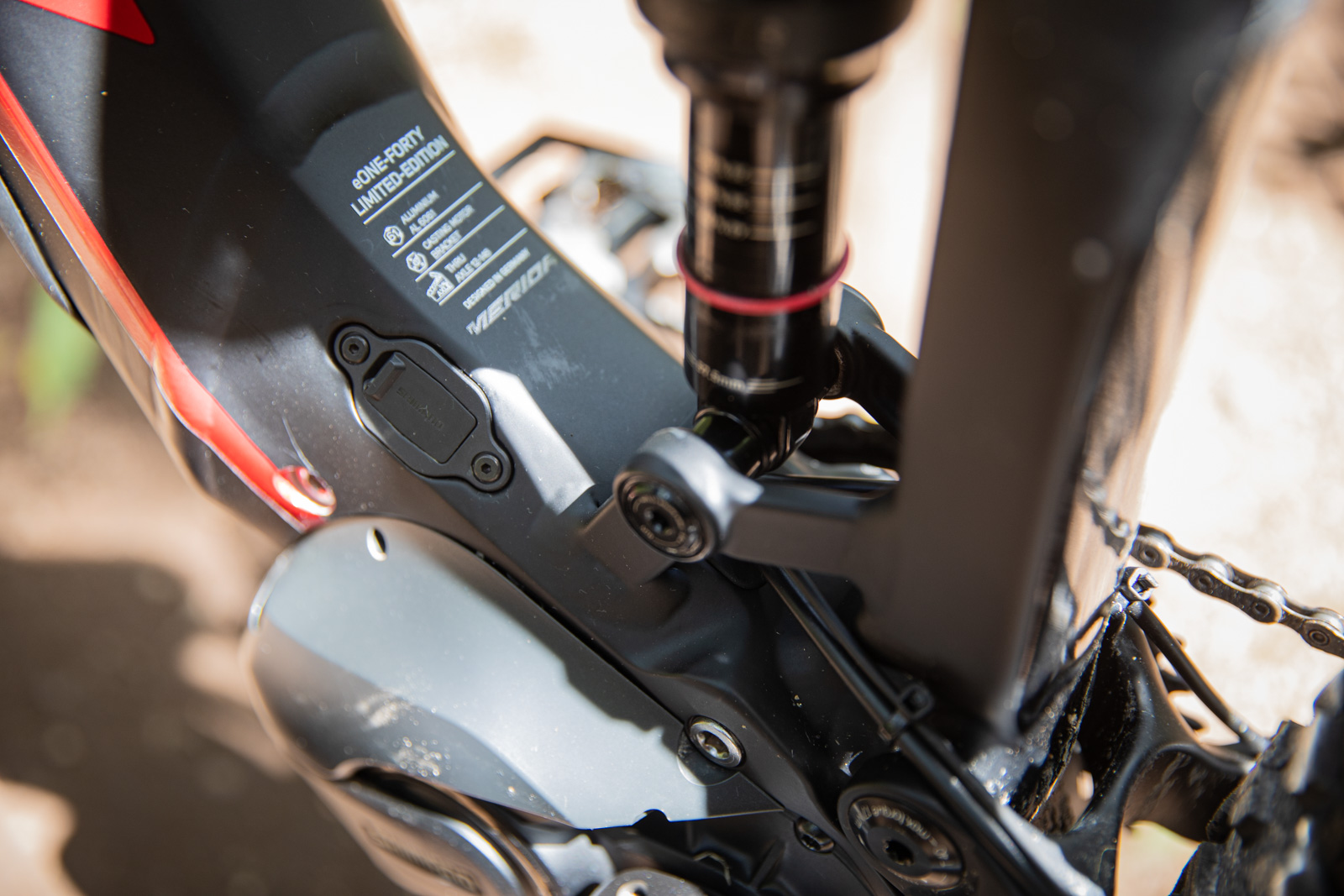
The frame geometry on the large on test has a 66.5 degree head angle and moderate 450mm reach. With a full complement of spacers I found the position a bit short and upright. I’m quite used to a long reach thanks to lanky arms and a really long reach on my own bike. But slamming the stem and getting the setback on the seat post right made the fit exactly what I was after.
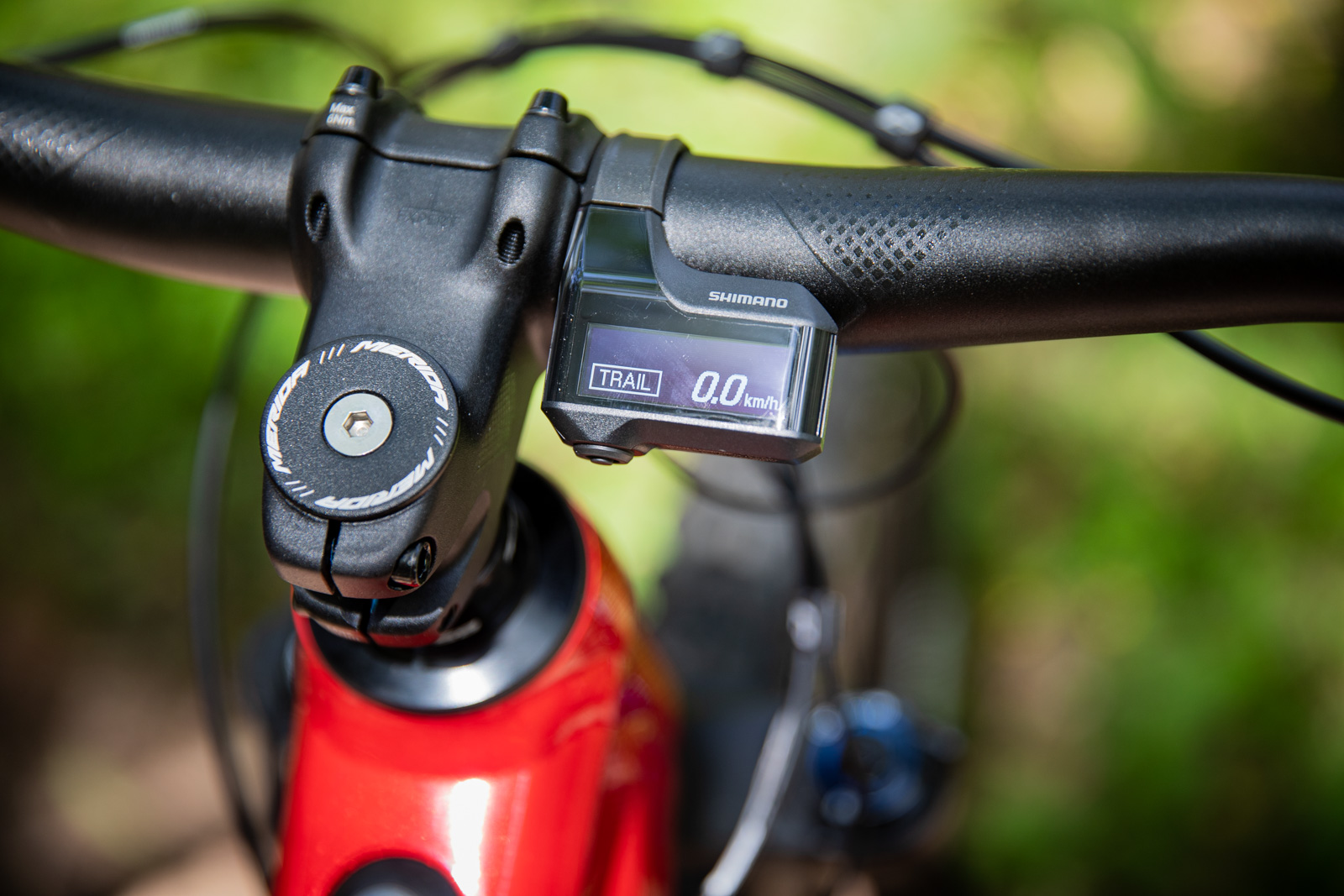
On The Trail
I’ll be straight up, I don’t have an eMTB in my personal fleet. I’m no eMTB hater, I think they have really changed the current face of mountain biking and lowered some barriers to entry around fitness – while lifting some up with cost! But my own riding doesn’t really call for one, and having another bike costing $5-10k in the shed isn’t something I can do. So my first few rides were all about getting along with an eMTB again, and really thinking about the modes on the Shimano STEPS system. Previously I had thought the Eco setting was a waste of time. But I used to live at the foot of a big hill, and now I live in a valley. And to be honest, Eco is what I used the most unless I was on a steep climb, when I moved to Trail. The biggest difference I find is how quickly you accelerate, and if you’re riding flatter trails with a lot of flow, you’re rarely losing much speed so Eco just helps you stay on top of it, while also extending battery life.
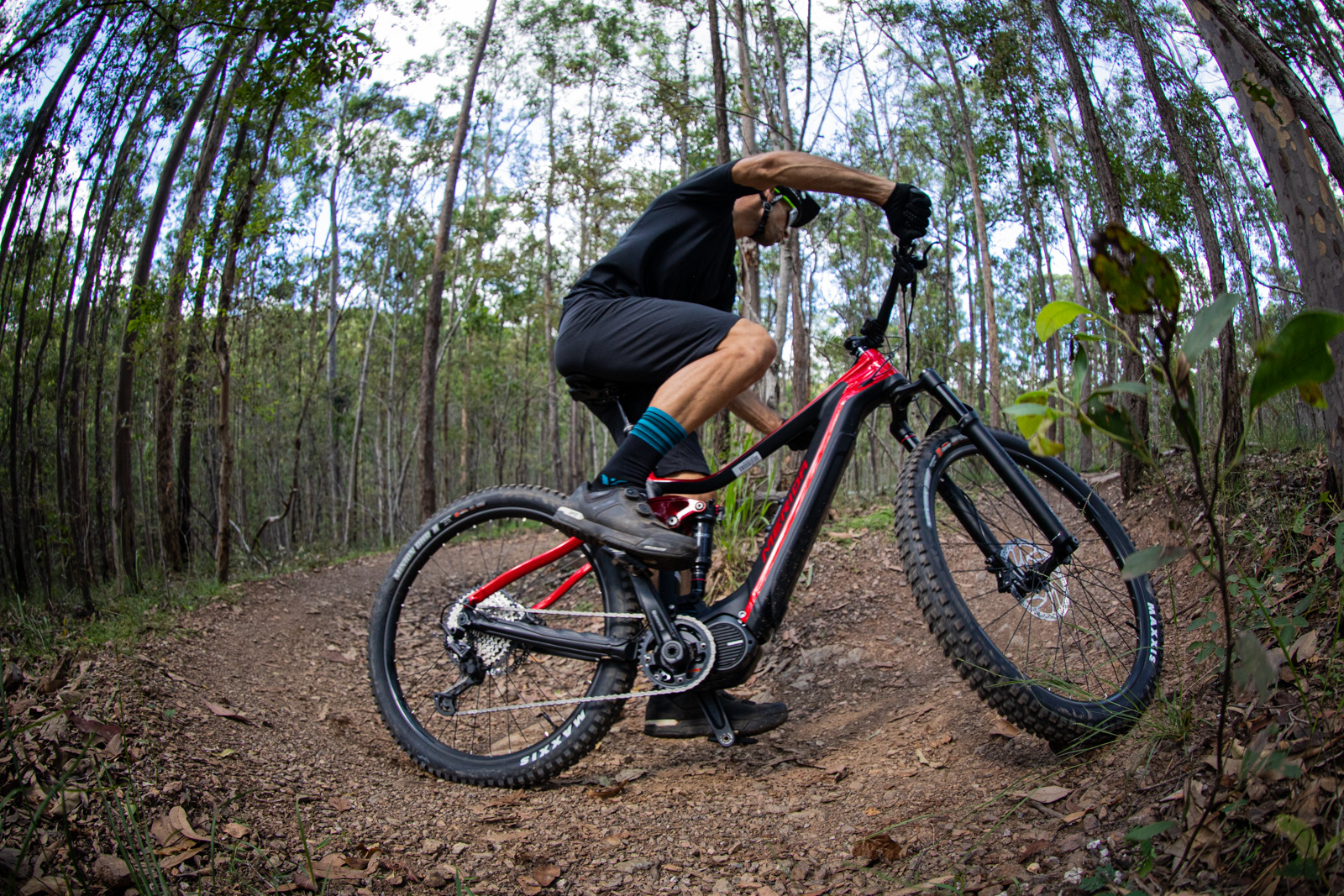
Given the weight of the bike (and most eMTBs) it feels really, really stable at speed. Be that bombing down a road, a firetrail, or a rocky chute. When it comes time to corner on the trails, this is where the mullet wheel sizing is pretty interesting. The front wheel stays planted a lot more than the rear, especially when driving with your feet to push into the corner. On the looser terrain on my local trails it was still totally fine, it’s not like it slips out at speed – but it really helps get the bike around the corner.
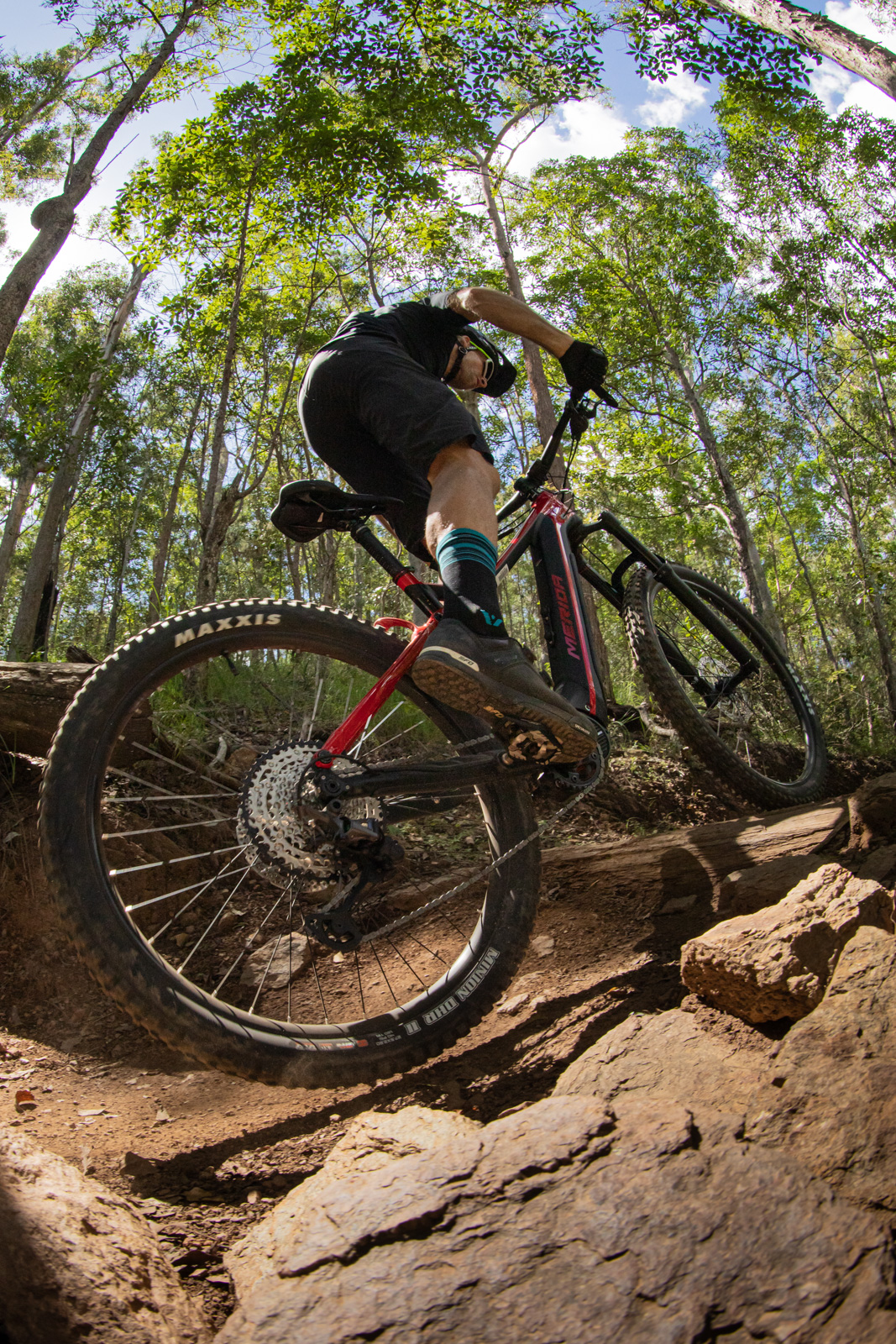
I haven’t ridden the new eOne-Sixty, or the old eOne-Sixty, so I’m not in a great position to compare how the eOne-Forty compares in terms of all-day riding ability. I do think it takes a couple of rides on an eMTB until you understand how the bike reacts when you stop pedalling. This is really important on technical climbs and ledges where you need to stop pedalling to get the bike up and over features. It’s at this point where the extra weight of an eMTB is noticeable, and really if it’s 19kg, 21kg or 24kg it’s still a lot of bike to manhandle up bigger ledges.
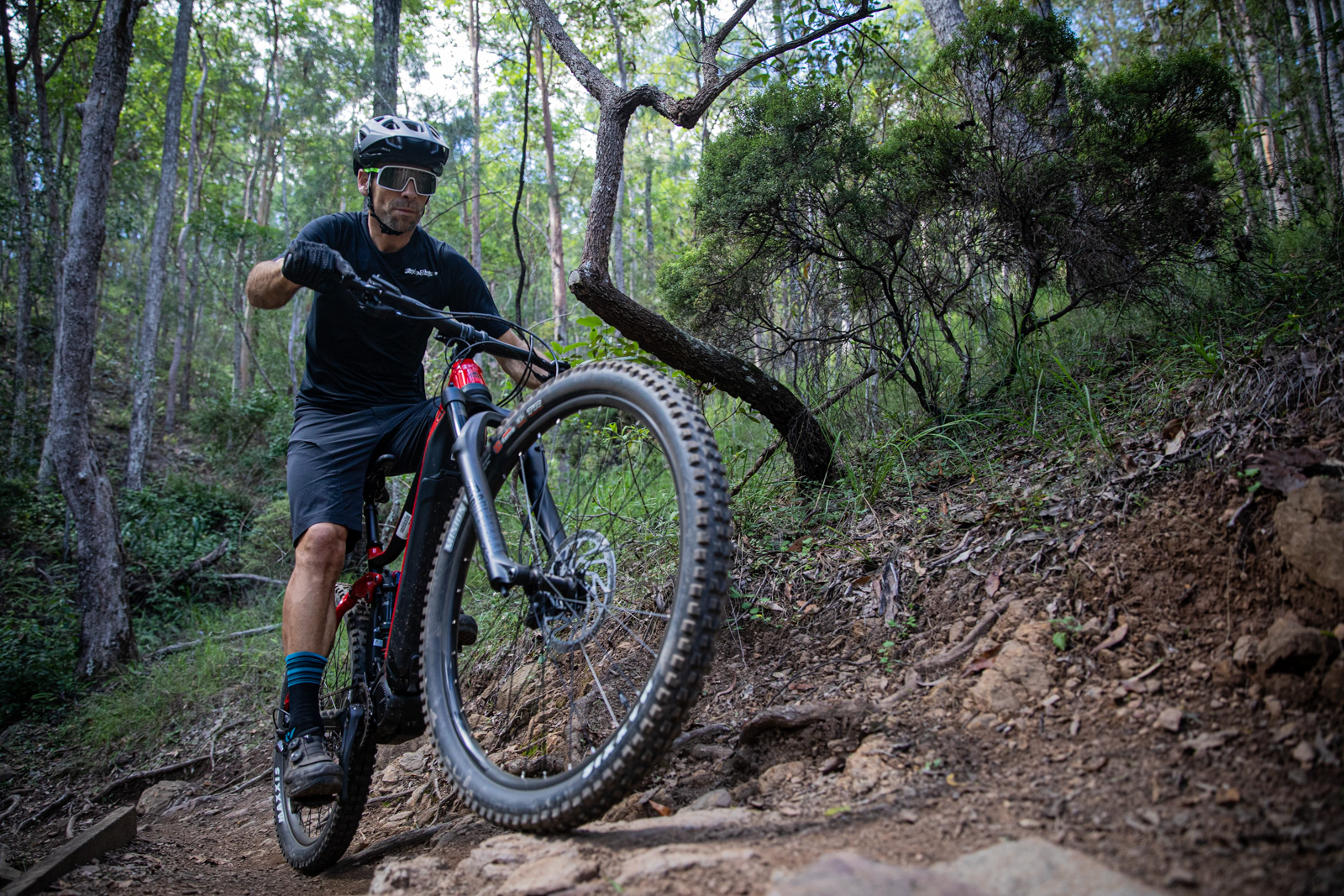
That said, the general trail manners of the eOne-Forty on singletrack climbs and descents was impeccable. It was a really dynamic ride once you have your tyres and suspension set correctly – as if you opt too soft the bike as a whole just feels sluggish. I was surprised to see how fast the steering input felt, and then realised the RockShox fork was consistently only extending 85-90% out of it’s travel.
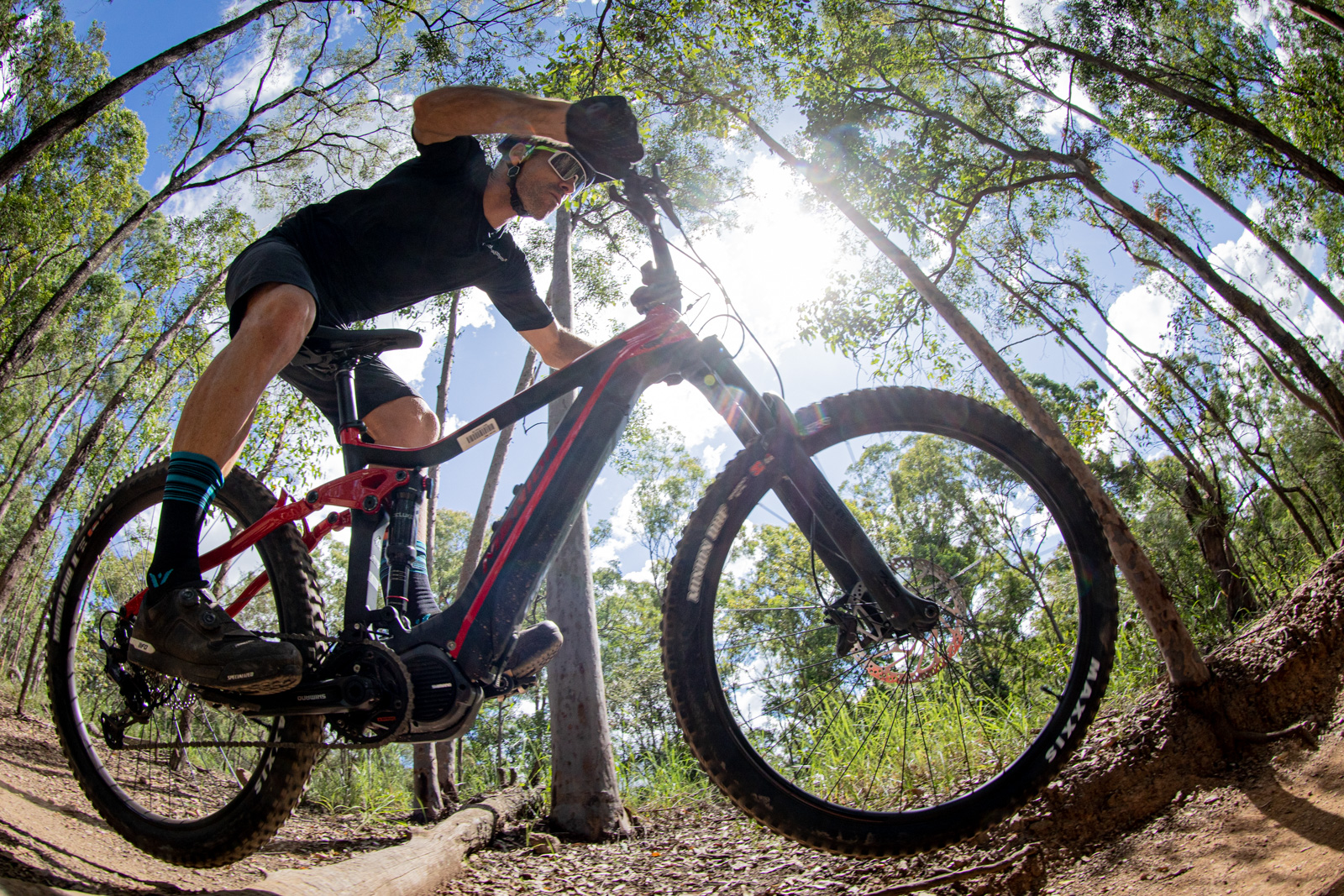
While the rear RockShox shock can feel a little vague in it’s platform setting, the fork does offer low-speed compression damping through to lockout and rebound adjustment, via the damper. Still, at higher speeds on faster trails it does start to feel a little overwhelmed. The dropper post actually falls into the same category. It’s function is perfect, but with 125mm drop it is a bit limited. When 24kg of bike starts to get a little bit rowdy, being able to have more drop would be a big bonus.
I did initially have concerns about the tyres, as I know plenty of others who prefer eMTB specific rubber. But I don’t ride as hard as they do. It’s still worth getting your pressure setup right, and if you know you’re hard on tyres it would be a smart choice to at least put an insert in the rear or consider an eMTB specific set of rubber. The brakes were fine for my use on descents that don’t last more than a few minutes, and in dry conditions. I’m used to heavily favouring the front brake and it’s distinct extra power was clear. But I think a $6500 bike that weighs 24kg should have 4-pot front and rear, with rotors that will take a metal pad upgrade.
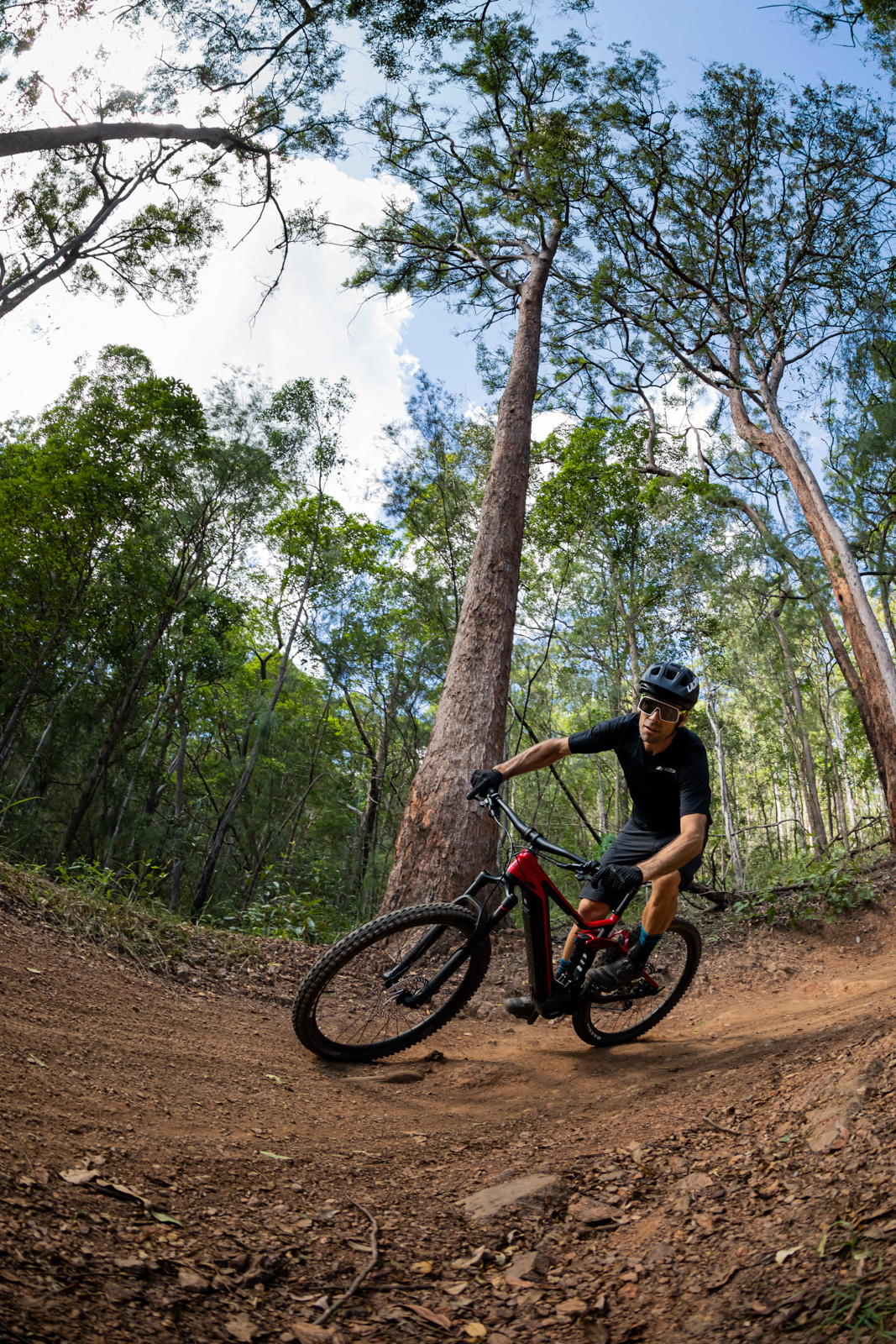
What I really liked about the Merida eOne-Forty was the efficiency in using it. It’s not so much of a slog riding it, even in Eco or off completely, on flat terrain. So if you’re really savvy with using the support modes you will be able to eek out a pretty long ride. I did a local 2.5hr loop, using eco and trail on most climbs, eco on descents and eco and off on the road to and from the trails. And after a 45km ride I still had 75km of range left according to the head unit. While the eOne-Forty could be labled a self-shuttling bike thanks to the pedal-assist unit, it’s real function lies within being a trail bike which can really support long rides, or easier climbing. I rarely found it was too much bike on a tight or steep trail, and noticed the weight mostly when moving it in my shed or putting it in the back of my car.
Our Take
Merida have ridden a wave of success with their first eOne-Sixty that hit the trails, and by all accounts the latest eOne-Sixty is carrying that momentum as the eMTB market not only explodes but evolves as well. The eOne-Forty is an interesting addition to the range. As one of our other testers has asked, when do you get the option of the short travel motor bike? Mountain biking is a little different though, and while a long travel eMTB can be ridden on just about any kind of trail by a highly experienced rider, it’s not the best choice for everyone. An eMTB with geometry and handling better suited to trail riding than all-mountain and enduro-style riding is far better suited to those who are looking for the pedalling support that an eMTB offers so they can enjoy the type of trails that most of us ride most of the time. Merida’s eOne-Forty LTD hits that square on the head, and with a few choice upgrades to suit your riding and needs it should be a high-quality bike that takes pride of place in your bike shed.
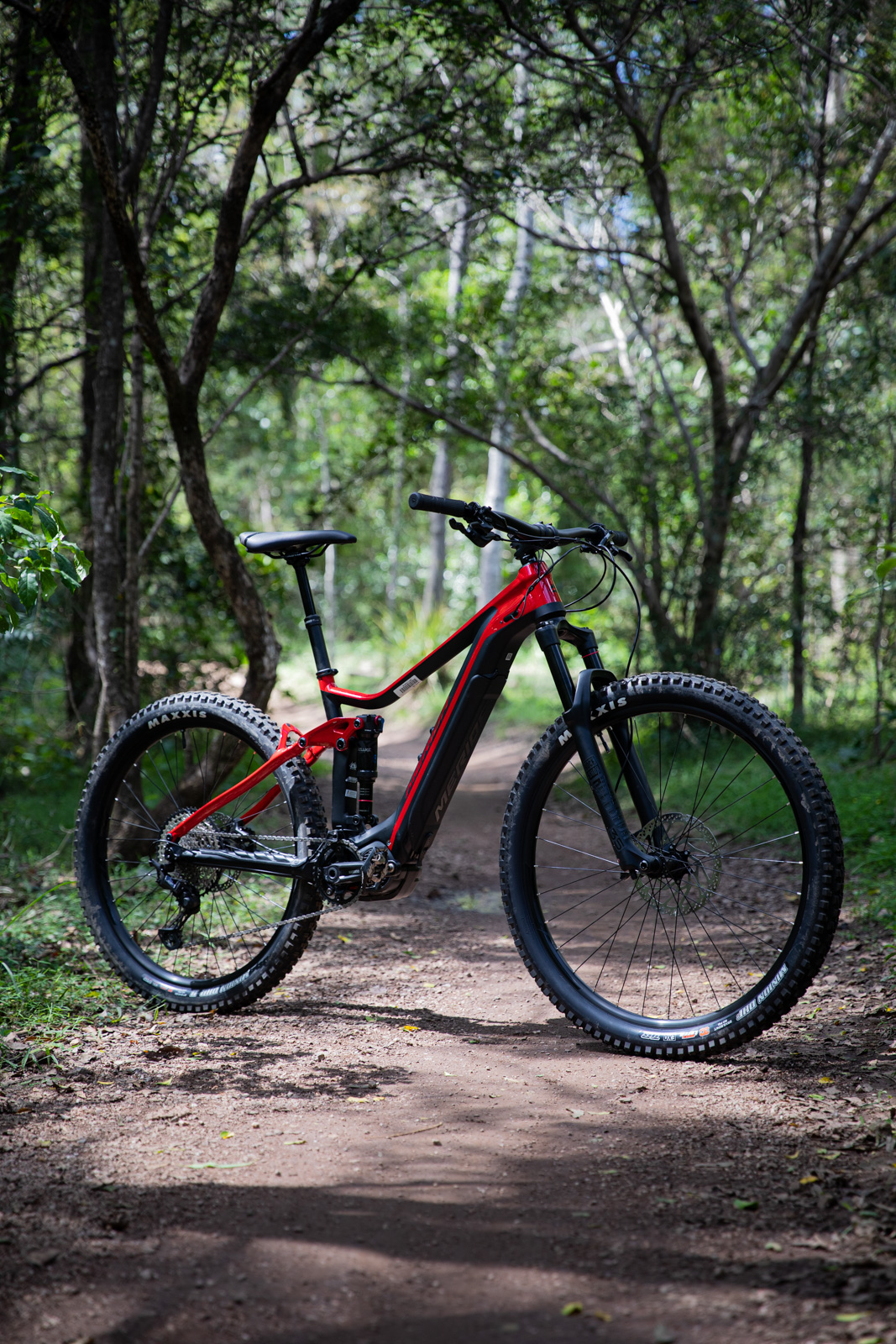
Brand: Merida
Model: eOne-Forty LTD
RRP: $6499
Weight: 23.78kg (with pedals, as tested)
From: merida-bikes.com
Available Sizes: S, M, L, XL
Frame Material: Hydroformed aluminium
Fork: RockShox 35 Gold RL, 140mm
Shock: RockShox Deluxe Select+, 133mm
Drive Unit: Shimano E8000
Display: Shimano SC-E7000
Battery: Shimano E8035, 504Wh
Shifter: Shimano SLX M7100, 12sp
Derailleur: Shimano Deore XT M8100, 12sp
Crank: Shimano FC-E8000, 165mm, 34t
Chain: Shimano, CN-M7100
Cassette: Shimano, SLX M7100, 10-51t
Hubs: Shimano, MT-400B/MT-510B
Spokes: Stainless, Black
Rims: Merida Comp TR, 29mm internal
Tyres : Maxxis DHF 29×2.5/DHR II 27.5×2.6”
Brakes: Shimano, MT-520/MT-500
Stem: Merida Expert eTR, 35mm clamp
Handlebars: Merida Expert eTR, 35mm clamp, model, width mm
Seatpost: Merida Comp TR, 125mm drop
Saddle: Merida, with integrated multitool

